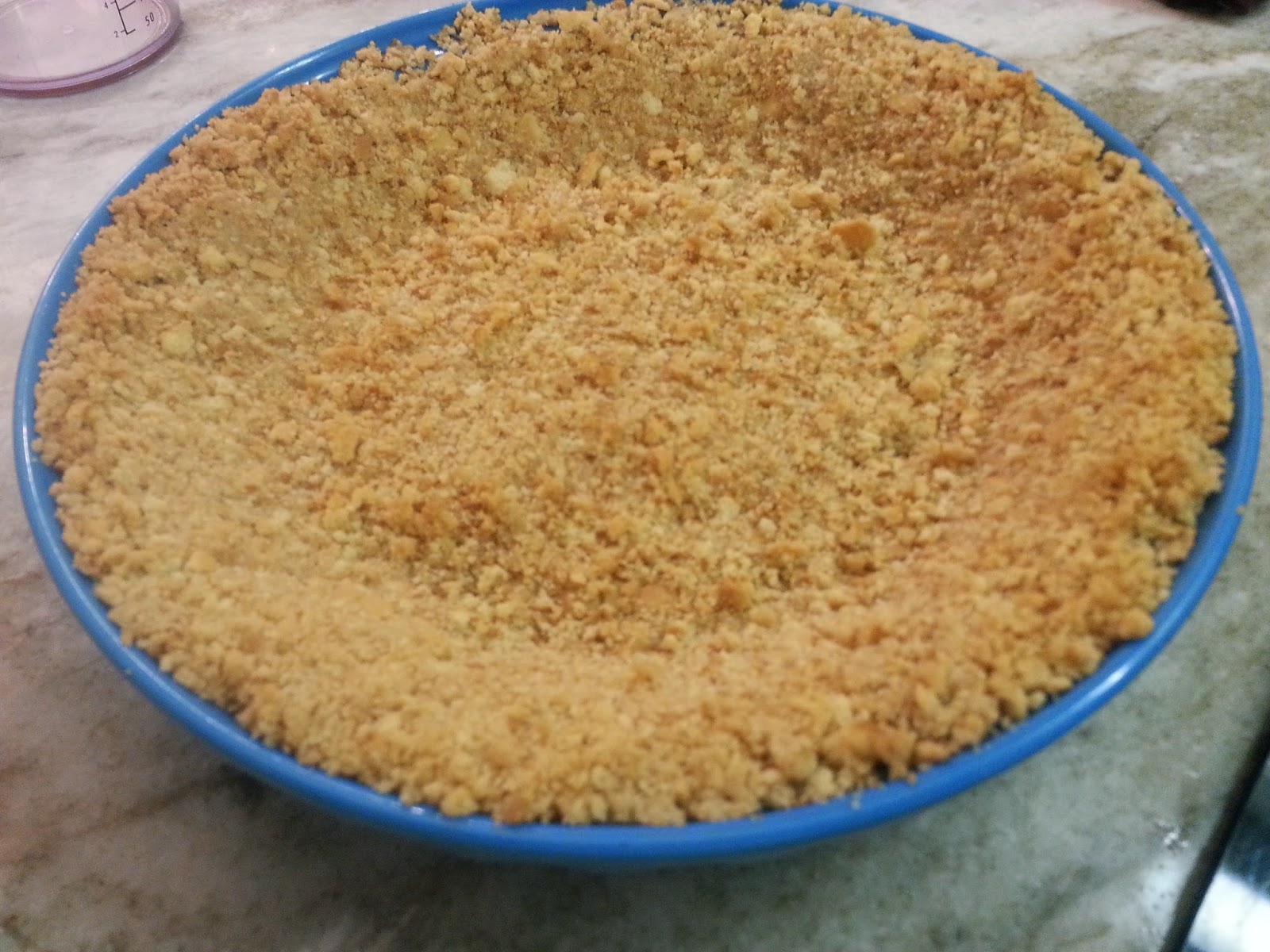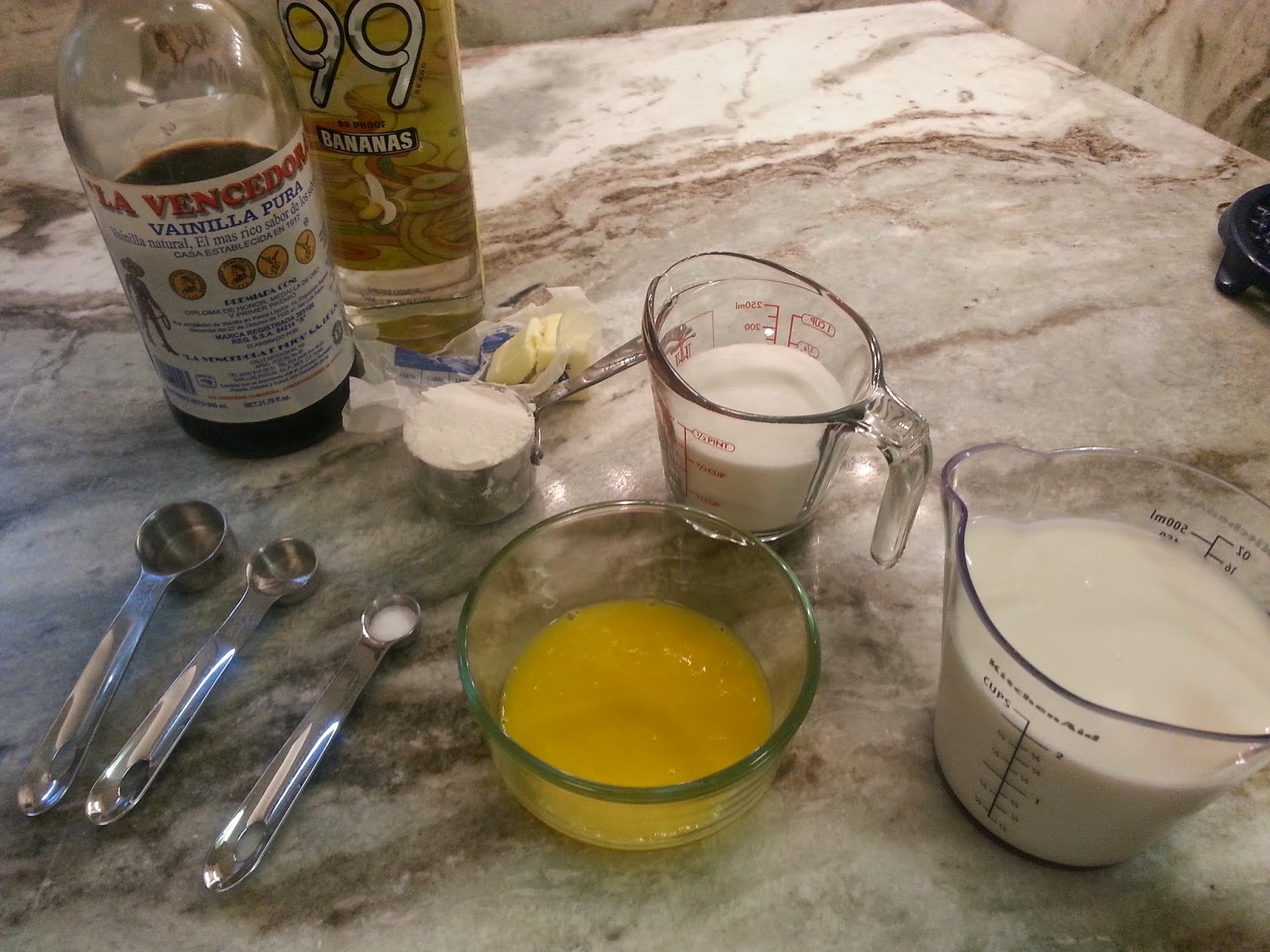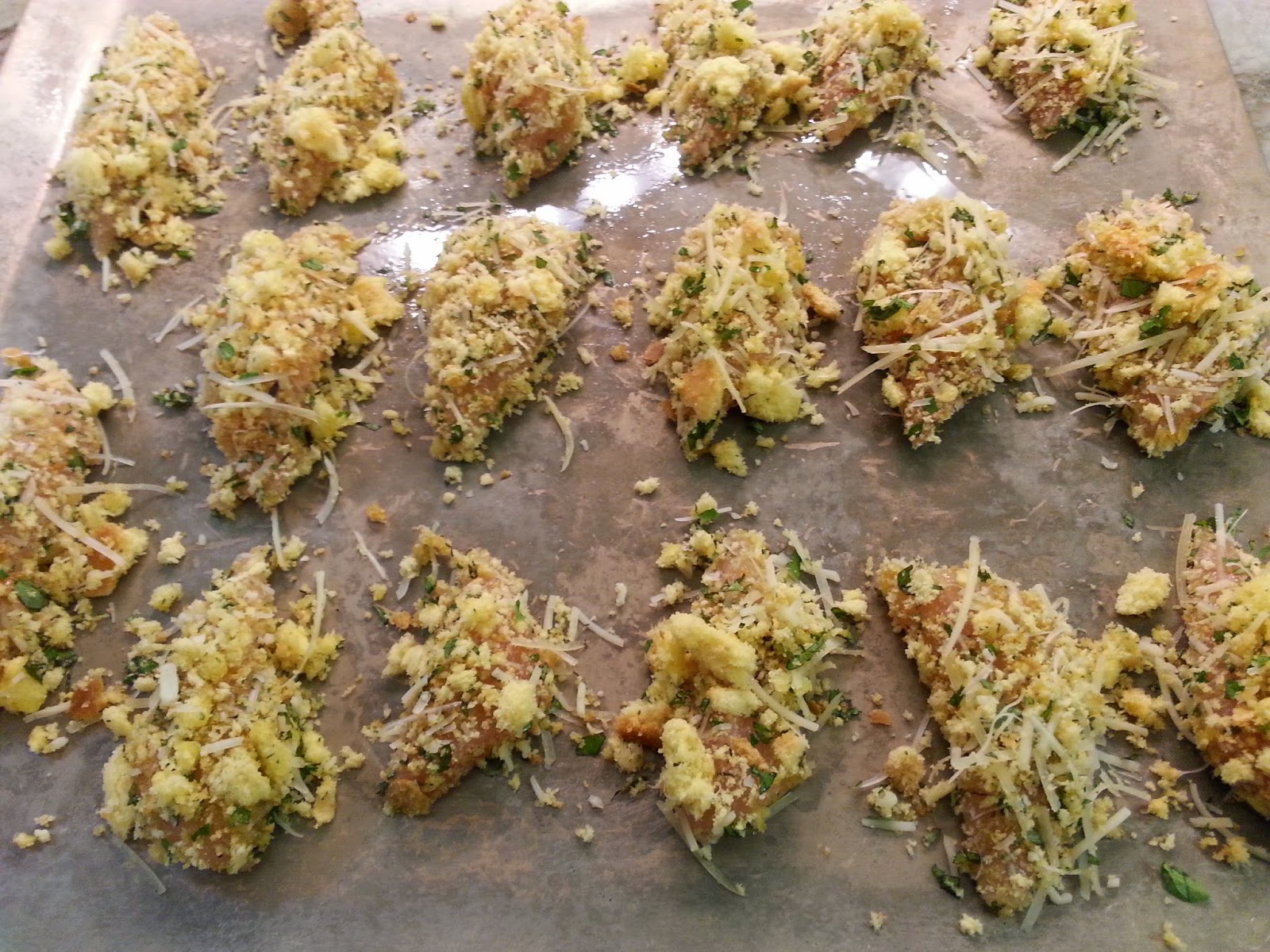I did make a few changes to the original recipe:
1) Used ~45 vanilla wafers, 1/4 cup of softened butter, and 1 tbsp sugar for the crust instead of a pastry crust.
2) Added 1 1/2 tbsp banana liqueur to the filling with the butter and vanilla.
3) Didn't bake the pie. I've never seen another baked cream pie (besides baking the crust). The texture is just right as is, as long as you cook the filling long enough on the stove top.
For the crust, I combined the wafers, softened butter, and sugar in a food processor, pulsed until well combined, pressed the mixture into a pie plate, and baked at 350°F for 10 minutes.
I set aside the crust to cool and put it in the fridge after that. Using a completely cooled crust helps the filling set once it has been poured in. I then chopped two bananas, tossed them with a sprinkling of lemon juice so that the acidity would counteract the browning, and covered them and set them aside.
Then I put the dry ingredients in a saucepan and added the milk over medium heat, stirring and cooking until the mixture was bubbly. You should notice a change in the appearance right before it boils--it will look almost like a shiny film at the top of the mixture--and then it will rapidly start thickening. Some reviews said that the mixture didn't thicken properly; if using flour, this process does take a few more minutes than it does using cornstarch, 3 tbsp of which is a viable substitute.*
I tried to catch the mixture at the beginning and just before it boiled.
It might be hard to see the difference here.
Sometimes I think I need an extra pair of hands.
I tempered the eggs, ladling a little of the bubbling mixture into the eggs and stirring before pouring the yolks into the saucepan off the heat. This raises the temperature of the yolks gradually and prevents scrambled eggs.
Pay no attention to the socked feet in front of the counter.
I placed it all back on the burner for about a minute, then took it off the heat to add the butter, vanilla, and liqueur, stirring until smooth. Then I lined the crust with the banana slices and poured the filling on top of them. I then placed the pie in the fridge. It took about two hours to set completely.
Finally, I used the same whipped cream recipe I used for the French silk pie as a topping and sliced another banana on top.
And then it was ready to serve! I would suggest using a large serving spoon instead of a pie server or spatula, though. It really does come out like pudding...
DEEMS THIS RECIPE
As easy as very easy pie. I mean pudding. I mean pie.
*I used flour, and it really did work, so I wouldn't panic if you don't keep cornstarch around!

















































.jpg)

